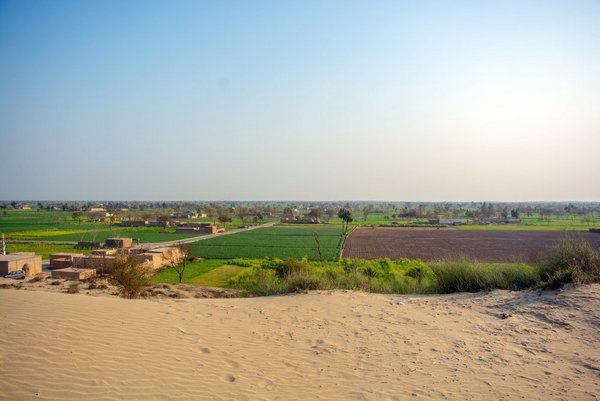 Read this article in French
Read this article in French- Share this article
- Subscribe to our newsletter
New materials improve harvesting water from desert air
Researchers and engineers have been working out ways to “harvest” water from desert air. Porous metal-organic materials play a key role in this context. Their cavities are especially well suited to trap water molecules from the air. A German-American team of researchers have now analysed the molecular chemistry processes involved in water harvesting and optimised the substances involved.
The results of the study, in which Professor Joachim Sauer of Humboldt University Berlin/Germany and Humboldt Research Award-winner Professor Laura Gagliardi also took part, were published in the specialist journal Science last October.
Gaining water from desert air
In metal-organic frameworks, or MOFs, metals and organic substances form a porous framework structure with a particularly large number of tiny cavities and a large internal surface. Certain MOFs were constructed in a manner enabling them to trap water molecules particularly well – even at the low level of humidity of just 20 per cent which is usual for deserts. The sun’s warmth subsequently presses the “harvested” water out of the MOF. Thus clean drinking water can be gained without additional energy. This is why many believe that MOFs bear a considerable potential to provide people in arid areas with water. However, it was previously unclear why and how the water molecules are held up by the MOFs.
Tracking the water molecules
Therefore, with the aid of X-ray crystallography and quantum-chemistry calculations, the team of researchers had a look inside the cavities of the MOFs and analysed at atom level precisely how the water molecules from the air are trapped and accumulate in the metal-organic framework. The team observed that whereas the first water molecules bind with the organic substances of the MOF, further water molecules interact much more effectively with the already present water molecules. Within the cavities, they first of all form chains, then clusters and finally a network of clusters. It is also important for the first water molecules not to stick too fast to the MOFs, since otherwise, the water cannot be properly pressed out of the material. Setting out from all these insights, with the aid of experiments and computer models, the researchers developed MOFs which allow the molecules to form clusters without sticking too fast on the organic substances.
“The development of water-absorbing materials has so far been based on the trial and error principle. Now that we understand how the molecular evolution of water structures in metal-organic materials works, we can focus on optimising them at atom level,” says Professor Joachim Sauer, co-author of the study and chemist at Humboldt University Berlin.
Since water molecules behave differently depending on outside temperatures and humidity, the insights from the study can help in developing MOFs which are optimised for certain environmental conditions and even work in cooler regions.
(Humboldt University/wi)
Reference:
N. Hanikel, X. Pei, S. Chheda, H. Lyu, W. Jeong, J. Sauer, L. Gagliardi, O. M. Yaghi
Evolution of water structures in metal-organic frameworks for improved atmospheric water harvesting, Science, October 2021. DOI: 10.1126/science.abj0890





Add a comment
Be the First to Comment